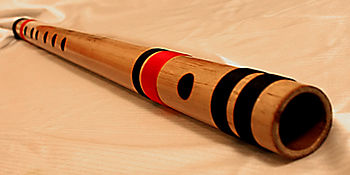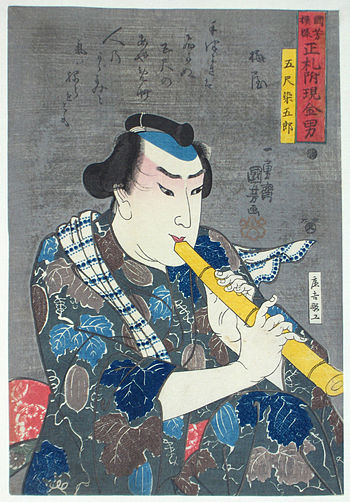 |
| Bansuri, a bamboo flute popular in India. The picture shows a 23-inch long flute often used in concerts (Photo credit: Wikipedia) |
To understand how to make a bamboo flute, you'll need to be aware of two basic numbers in flute making in order to make perfect homemade music. The numbers to know for how to make a flute with perfect tuning are; the linear measurement for how far sound travels per second, and; the number of Hertz (the vibratory frequency) of any particular notes you will have the flute play. But to correctly gauge the sound, first, we need to know how to make flute embouchures. For this example, we'll use a transverse (or "side-blown") flute. It's very simple - make the hole for this be about half the width of the bore diameter, and have the hole's center point be situated at one bore diameter's distance from the inside of the closed end. Bevel one edge on the inside at an acute angle for the best "airstream splitting edge".
Okay, now for the numbers and how to use them in making our bamboo flute, and superb homemade music. The distance sound travels per second, at sea level, and at about 70 degrees F (or 21 degrees C), is 13526.5 inches (or 34357.31 centimeters). Now you take the frequency number of the note, which for this example we'll say the fundamental note will be "A", which would be 440, and divide the previous number by this one. What you will get is the length of one wavelength for this note, in this case, 30.74 inches, or 70.08 centimeters.
How to make a flute body the correct length for this is now to divide this measurement by two, which would make it about 15 3/8 inches, or 35.04 centimeters. You'll find that due to other factors in flute making, such as bore diameter and flute body wall thickness, you may need to shorten this a little bit more to get the note precisely - do this a little at a time. Use this same formula to find out how to make flute finger-hole placements along the length according to the notes you wish them to play, and there you have it!
Article Directory: EzineArticles |



